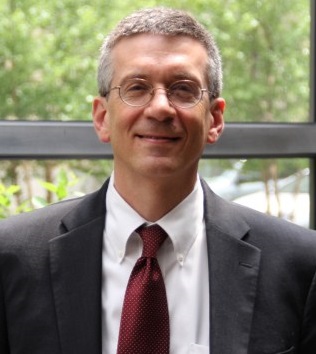Article by ASCE-PGH Awards Committee and ASCE Blog Editor
 James H. Garrett, Jr., Ph.D., P.E. is the recipient of the 2014 ASCE-Pittsburgh Civil Engineer of the Year Award. “I am extremely honored to have been selected for this award by the ASCE Pittsburgh Chapter,” says Dr. Garrett. “I was a student of, worked with, and taught some of the former awardees. The list of engineers selected in the past to receive this award is impressive and humbling, and I am grateful to have been selected to join them.”
James H. Garrett, Jr., Ph.D., P.E. is the recipient of the 2014 ASCE-Pittsburgh Civil Engineer of the Year Award. “I am extremely honored to have been selected for this award by the ASCE Pittsburgh Chapter,” says Dr. Garrett. “I was a student of, worked with, and taught some of the former awardees. The list of engineers selected in the past to receive this award is impressive and humbling, and I am grateful to have been selected to join them.”
Dr. Garrett is the Thomas Lord Professor of Civil and Environmental Engineering (CEE) and currently the Dean of Engineering at Carnegie Mellon University (CMU). However, he started his engineering career at CMU long before joining the faculty, as a student. “I got a fantastic education at Carnegie Mellon. CMU formed my interdisciplinary approach to problem definition and solution. They honed my ability to think critically and to look at problems from a systems perspective,” he says.
Dr. Garrett has earned three Civil Engineering degrees at CMU: a BS in 1982, a MS in 1983, and a PhD in 1986. “Being department head of CEE and now Dean of the College of Engineering here at CMU was not something I would have predicted earlier in my career,” he says. “I will say that it is exciting, rewarding and very challenging to serve the excellent students, faculty and staff as the dean of their college, and I greatly enjoy every day.”
Other professors also remarked on Dr. Garrett’s long-standing leadership roles.
“Jim Garrett has been a leader in professional service activities throughout his career, including when he was a student at Carnegie Mellon,” says colleague, Dr. Jeanne VanBriesen, professor at CMU CEE. “When I was inducted into the Carnegie Mellon chapter of Chi Epsilon, the Civil Engineering Honor Society, several years after joining the faculty, I was surprised to see Jim Garrett’s name and signature among the very first in the chapter registry. He was one of the founders of the chapter in 1982.”
When colleagues speak about Dr. Garrett and his work, they refer to his commitment and passion. “Jim is a very open and collaborative person, which, combined with his broad knowledge in and passion for civil engineering, makes him a great colleague with whom I have much enjoyed working,” Dr. VanBriesen says.
Colleague, Dr. Irvine Oppenheim, professor at CMU CEE, also speaks about Dr. Garrett’s passion. “Everything Jim does professionally stems from his pride in being an engineer, and most especially a civil engineer,” says Dr. Oppenheim. “He has devoted his career to raising the standing of the profession, the CEE Department at CMU, the engineering college at CMU, and CMU itself.”
After receiving his Ph.D., Dr. Garrett worked as a Project Engineer with Schlumberger Well Services in Houston, Texas from 1986-1987, and was an Assistant Professor in Civil Engineering at the University of Illinois at Urbana-Champaign from 1987-1990. Dr. Garrett joined the CMU Civil and Environmental Engineering faculty in 1990 and was promoted to Full Professor in 1996. He was appointed as Head of Civil and Environmental Engineering in June 2006 and led the department until December 2012. In January 2013 he was appointed as Dean of the College of Engineering.
Dr. Garrett has been a Fellow of ASCE since 2009 and is a licensed professional engineer. He holds two patents, and is the author of more than 250 technical publications. Throughout his career, Dr. Garrett’s research and teaching have been focused on bringing advanced computing and information technologies to bear on civil engineering problems. His research interests have included:
- The application of sensors and sensor systems to civil infrastructure condition assessments.
- Designing mobile hardware/software systems for field applications.
- Representations and processing strategies to support the usage of engineering codes, standards, and specifications.
- Understanding knowledge-based decision support systems.
Since Dr. Garrett became the Dean of the College of Engineering, the college has created a new strategic plan, and launched a number of new initiatives in research such as advanced manufacturing, soft robotics, and smart infrastructure. The college has also launched new initiatives in communications, faculty development and educational programs for innovation and entrepreneurship.
When asked about his accomplishments, Dr. Garrett describes his pride for the next generation of engineers. “I am very proud of the many students I have advised or taught over the years,” Dr. Garrett says. “Actually, I feel this way about all alumni I meet from CMU, not just the ones I have taught. When they come back to visit and tell me about the great diversity of projects they are working and the impact they are having, I am filled with pride for them and their accomplishments.”
Dr. Garrett has another source of pride. “I am most proud of my two children, both of whom graduated from CMU.”

